1854-63: Plutonians
By:
August 6, 2009
I’ve named this 1854-63 generation after one of its members: Percival Lowell, the astronomer who predicted the existence of Planet X — which was discovered in 1930, and named Pluto in part to echo P.L.’s initials. Pluto is the god of the underworld, and members of this generation — Freud, Emil Kraepelin, Sir James Frazer, Eugen Bleuler, Julius Wagner-Jauregg, Franz Boas, Émile Durkheim — were dedicated to spelunking the darkest corners of the unconscious, rationalizing the world’s religions and myths, laying bare the deepest structures of society and culture.
And then there’s Plutonian Joseph Conrad’s voyage to the Heart of Darkness and Rimbaud’s Une Saison en Enfer. Kellogg and Post were spelunkers of humankind’s intestinal underworld; their invention of breakfast cereal (at their respective communes) was one aspect of their shared fascination with nutrition and enemas.
Members of this cohort were in their teens and 20s during the Eighteen-Seventies (1874–1883, not to be confused with the 1880s), and in their 20s and 30s during the Eighties (1884–93, not to be confused with the 1880s).
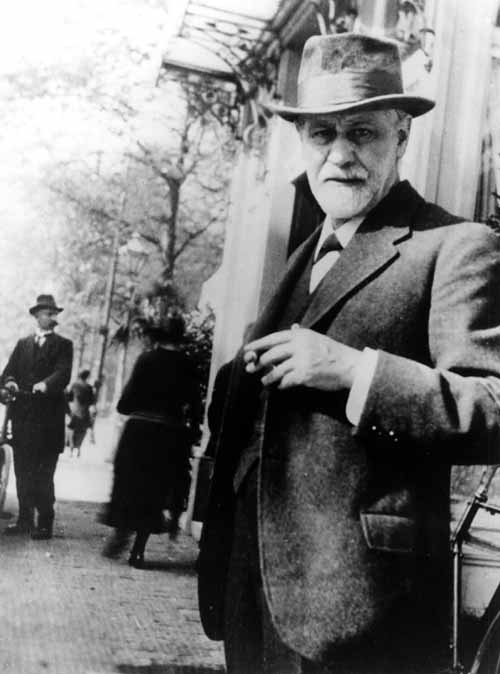
Erik Davis tells me: “Pluto is a dark technological god of transformation. So you get the apocalyptic dimension, the sense of transformation, the ‘cosmic’ current.” Yes, Plutonians like Rimbaud, Samuel Liddell MacGregor Mathers, Arthur Edward Waite, Arthur Machen, Edmund Husserl, Theodor Reuss, Pierre Janet, Margaret Murray, Rudolf Steiner, Alfred North Whitehead, and Henri Bergson were fascinated with occultism, metaphysics, the systematic derangement of the senses, the élan vital, the cosmic perspective, the naked lunch at the end of the fork perceived only via the phenomenological epoché.
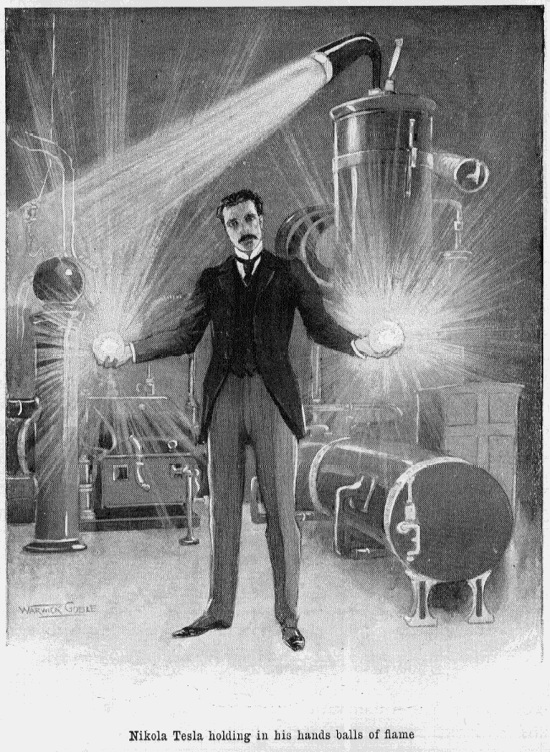
Oh, and speaking of plutonian currents and technological transformation: the Serbian-born inventor Nikola Tesla invented alternating current (the AC to Edison’s DC). As we read in the July 26, 2009 New York Times Magazine, in Serbia, Tesla “is not just the local kid made good: his name, everywhere, stands for the hope that lurking beneath the tediously materialistic surface of our world lie the phantasmagorical powers of a hidden realm.”
The Tesla coil, patented in 1891, took ordinary sixty-cycle per second household current and stepped it up to extremely high frequencies — which allowed its inventor to develop some of the first neon and fluorescent illumination, and to take the first x-ray photographs. Tesla also invented wireless telegraphy, though credit eventually went to Marconi. And in 1890, Tesla illuminated a vacuum tube wirelessly — having transmitted energy through the air. Wireless remote control soon followed. After building an experimental station near Pikes Peak, in Colorado Springs, Tesla’s technicians assembled an enormous Tesla coil, specially designed to send powerful electrical impulses into the earth. Tesla, the greatest of all Plutonians, had decided that the earth itself was a great conductor, “literally alive with electrical vibrations” — and that he could use it to transmit electrical power without wires.
Tesla claimed that soon, humankind would tap the sun’s energy with an antenna, control the weather with electrical energy, and establish a global system of wireless communications. “When wireless is fully applied the earth will be converted into a huge brain,” he told backer J.P. Morgan, “capable of response in every one of its parts.” Morgan financed Tesla’s Wardenclyffe project, a 187-foot tower supporting a 55-ton steel sphere. Beneath the tower, iron pipes plunged 420 feet into the ground so that currents could pass through them and seize hold of the earth. “In this system that I have invented,” Tesla explained, “it is necessary for the machine to get a grip of the earth, otherwise it cannot shake the earth. It has to have a grip… so that the whole of this globe can quiver.”
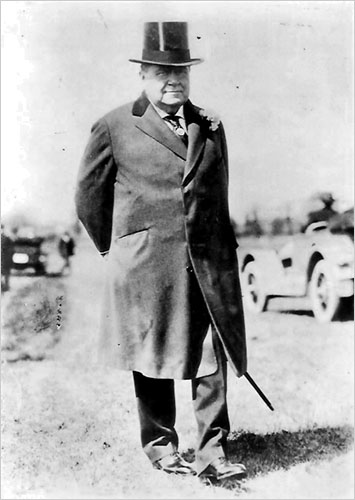
Pluto was also the Roman god of precious metals, because they are mined from the underworld. Every generation has its plutocrats, but the very names of the 1854-63 cohort’s American capitalists and Wall Street journalists are iconic: Barron, Mellon, Schwab, and (Dow) Jones! Diamond Jim Brady! Not to mention Ford, Gillette, Sears, Duke, Hearst, Guggenheim, Hershey, Dayton, Maytag, Smucker, Hormel, Wrigley, and honorary Plutonians Cecil Rhodes, John Jacob Astor, and Jim Beam.
A handful of Plutonians were some of the most brilliant critics of the horrors, paradoxes, and absurdities of modern capitalism, ever: Thorstein Veblen (The Theory of the Leisure Class), Georg Simmel (Philosophy of Money), Socialist Party presidential candidate and I.W.W. co-founder Eugene V. Debs, muckraker Ida Tarbell (History of the Standard Oil Company), and honorary Plutonian Max Weber (The Protestant Ethic and the Spirit of Capitalism).
A reminder of my 250-year generational periodization scheme:
1755-64: [Republican Generation] Perfectibilists
1765-74: [Republican, Compromise Generations] Original Romantics
1775-84: [Compromise Generation] Ironic Idealists
1785-94: [Compromise, Transcendental Generations] Original Prometheans
1795-1804: [Transcendental Generation] Monomaniacs
1805-14: [Transcendental Generation] Autotelics
1815-24: [Transcendental, Gilded Generations] Retrogressivists
1825-33: [Gilded Generation] Post-Romantics
1834-43: [Gilded Generation] Original Decadents
1844-53: [Progressive Generation] New Prometheans
1854-63: [Progressive, Missionary Generations] Plutonians
1864-73: [Missionary Generation] Anarcho-Symbolists
1874-83: [Missionary Generation] Psychonauts
1884-93: [Lost Generation] Modernists
1894-1903: [Lost, Greatest/GI Generations] Hardboileds
1904-13: [Greatest/GI Generation] Partisans
1914-23: [Greatest/GI Generation] New Gods
1924-33: [Silent Generation] Postmodernists
1934-43: [Silent Generation] Anti-Anti-Utopians
1944-53: [Boomers] Blank Generation
1954-63: [Boomers] OGXers
1964-73: [Generation X, Thirteenth Generation] Reconstructionists
1974-82: [Generations X, Y] Revivalists
1983-92: [Millennial Generation] Social Darwikians
1993-2002: [Millennials, Generation Z] TBA
LEARN MORE about this periodization scheme | READ ALL generational articles on HiLobrow.
Meet the Plutonians.
1854: Hertha Ayrton (Physicist, electric arc), David Buick (designed the first Buick motorcars), F. Marion Crawford (Novelist), George Eastman (inventor of the Kodak camera), Sir James Frazer (Anthropologist, The Golden Bough), Samuel Liddell MacGregor Mathers (Magician, founder of The Hermetic Order of the Golden Dawn), Henri Poincaré (Mathematician, Poincaré Conjecture), C. W. Post (invented Postum and Grape-Nuts), Arthur Rimbaud (Poet, Une Saison en Enfer), Charles Angrand (Neo-Impressionist painter), John Philip Sousa (Composer, “Stars and Stripes Forever”). Honorary New Prometheans (1844-53): Oscar Wilde (Anglo-Irish playwright, author, dandy, decadent). He was more of a Uranian than a Plutonian — ha! (Sorry, period humor.) Also Thomas A. Watson (Assistant to Alexander Graham Bell) and James L. Ford (author and theater critic, anti-highbrow)., whose 1911 story “The Highbrow” suggests that the highbrow is a mutant species.
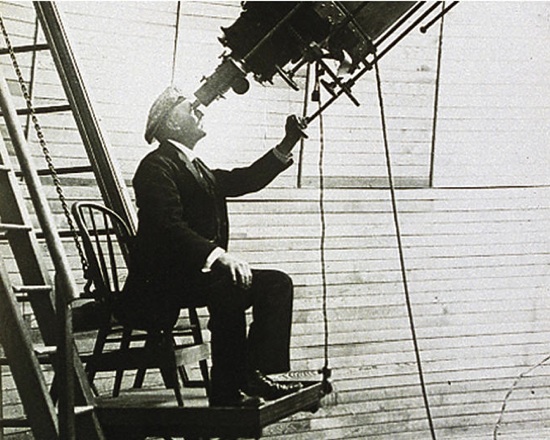
1855: Percival Lowell (Astronomer, predicted existence of Pluto), Clarence W. Barron (Wall Street Journal proprietor, 1903-28), John Browning (gun designer), Eugene V. Debs (Labor leader, ran for President five times), King Gillette (Invented safety razor), Ned Kelly (iron-clad Australian outlaw), Andrew W. Mellon (US Secretary of the Treasury, 1921-32), Evelyn De Morgan (British Pre-Raphaelite painter), Theodor Reuss (founded the Ordo Templi Orientis), James Barnes (American writer, magazine editor).
1856: Sigmund Freud (Psychiatrist), Nikola Tesla (invented alternating current), L. Frank Baum (Novelist, The Wizard of Oz), Woodrow Wilson (28th US President, 1913-21), Louis D. Brandeis (US Supreme Court Justice, 1916-39), James Buchanan Duke (American Tobacco Company), Daniel Guggenheim (Mining magnate), H. Rider Haggard (Novelist, King Solomon’s Mines), Frank Harris (Anglo-Irish-American author, My Life and Loves), Elbert Hubbard (founder of Roycroft Press), Diamond Jim Brady (larger-than-life millionaire), Edward Jones (co-founder of Dow Jones, editor of Wall Street Journal), Emil Kraepelin (Psychiatrist, manic depression and schizophrenia), A. Lawrence Lowell (President, Harvard University, 1909-33), Henri Edmond Cross (Neo-Impressionist painter), Robert E. Peary (Explorer, first to reach the North Pole), Philippe Pétain (Leader of Vichy France), John Singer Sargent (American portraitist), George Bernard Shaw (Anglo-Irish dramatist and pamphleteer), Louis Sullivan (early skyscraper architect), J. J. Thomson (Physicist, discovered the electron), Booker T. Washington (Educator, Activist, Up From Slavery), Kate Douglas Wiggin (Novelist, Rebecca of Sunnybrook Farm), Edmund Beecher Wilson (Biologist, The Cell in Development and Inheritance).
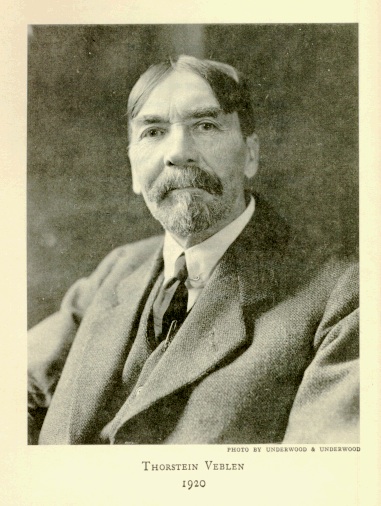
1857: Thorstein Veblen (Economist, The Theory of the Leisure Class), Joseph Conrad (Author, Heart of Darkness), William Howard Taft (27th US President, 1909-13), Edward Barnard (self-taught astronomer), Eugen Bleuler (Psychiatrist, coined term schizophrenia), Clarence Darrow (Attorney, Scopes Monkey Trial), George Draper Dayton (founder of what is now Target Stores), Edward Elgar (Composer, “Pomp and Circumstance”), George Gissing (Novelist, New Grub Street), Milton Hershey (founder of Hershey’s), Heinrich Hertz (Physicist, discoverer of electromagnetic radiation), Edwin Lester Arnold (British author, Lieut. Gullivar Jones), Gertrude Franklin Atherton (American novelist, Senator North, Black Oxen), Konstantin Eduardovich Tsiolkovsky (Russian and Soviet astronautics and rocket dynamics pioneer, author), George Griffith (British SF author, explorer), Robert Baden-Powell (Founder of the Boy Scout movement), James E. Keeler (Astronomer, composition of Saturn’s rings), Frederick L. Maytag (founder of Maytag Corporation), Emmeline Pankhurst (Militant suffragette), Le Pétomane (legendary fartiste), Pope Pius XI, Charles Sherrington (Doctor, neurons and synapses), Frank J. Sprague (invented streetcars and express elevators), Ida M. Tarbell (Journalist, History of the Standard Oil Company), Julius Wagner-Jauregg (Psychiatrist, pioneered shock therapy), Arthur Edward Waite (Paranormal, created the Rider-Waite Tarot deck)
1858: Franz Boas (father of American Anthropology), Charles Chesnutt (Novelist, The Conjure Woman), Rudolf Diesel (inventor of the Diesel Engine), Émile Durkheim (Sociologist, Rules of the Sociological Method), Eleanora Duse (most famous Italian actress of her time), Rémy de Gourmont (Poet), Benjamin Kidd (Sociologist, Social Evolution), E. (Edith) Nesbit (Novelist, The Story of the Treasure Seekers; co-founded the Fabian Society), Adolph Ochs (New York Times Publisher, 1896-1936), Giuseppe Peano (Mathematician, infinitesimal calculus), Max Planck (Physicist, originator of quantum theory), Giacomo Puccini (Composer, Madame Butterfly), Theodore Roosevelt (26th US President, 1901-09), Georg Simmel (Sociologist, Philosophy of Money), Jerome Smucker (Founder of J. M. Smucker Company), John A. Hobson (British economist, anti-imperialist).
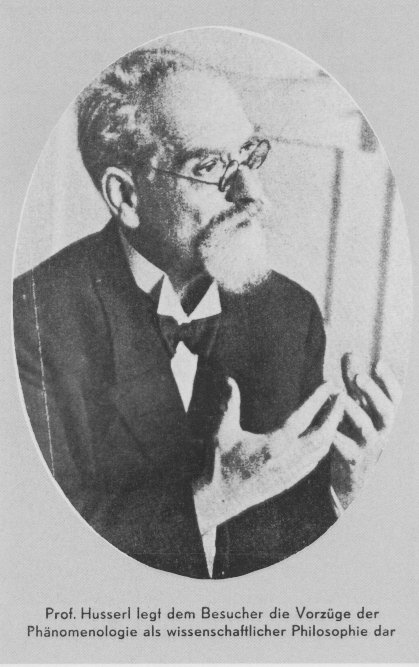
1859: Edmund Husserl (Phenomenological philosopher), Arthur Conan Doyle (Anglo-Irish novelist, creator of Sherlock Holmes, Professor Challenger, much more), Georges Seurat (Neo-Impressionist painting pioneer), Sholem Aleichem (Author, Fiddler on the Roof), Henri Bergson (Philosopher, L’Évolution Créatrice), Billy the Kid (frontier outlaw), Walter Camp (Father of American football), Pierre Curie (Physicist, early investigator of radiation), John Dewey (Pragmatist philosopher, education reformer), Alfred Dreyfus (Dreyfus Affair scapegoat), Havelock Ellis (Biologist, Studies in the Psychology of Sex), George Ferris (inventor of the Ferris Wheel), Knut Hamsun (Norwegian novelist), A. E. Housman (Poet), Pierre Janet (Founder of Automatic Psychology), Jerome K. Jerome (Author, Three Men in a Boat), Oscar Mayer (Oscar Mayer Meats, Inc.), Maurice Prendergast (American Post-Impressionist watercolorist), Kaiser Wilhelm (last of the German emperors)
1860: Charlotte Perkins Gilman (American sociologist, novelist, utopian feminist, Women and Economics), Jane Addams (Activist), J. M. Barrie (Author, Peter Pan), Lizzie Borden (Presumed axe murderer), William Jennings Bryan (Politician, prosecutor of the Scopes Monkey Trial), Anton Chekhov (Playwright and short story writer), Charles Chree (Astronomer, geomagnetic phenomena), William K. L. Dickson (inventor, motion picture camera), Theodor Herzl (Lead Zionist), George A. Hormel (Founder of Hormel Foods Corporation), Ishi (last of an extinct tribe), Jigoro Kano (founder of Judo), Will Keith Kellogg (corn flakes and Rice Krispies), Gustav Mahler (Composer), Harriet Monroe (founder of Poetry magazine), Annie Oakley (performance artist), Lillian Russell (actress, suffragette), Elmer Sperry (gyroscopic compass), Andrew Volstead (legislated enforcement of Prohibition), Owen Wister (Author, The Virginian)
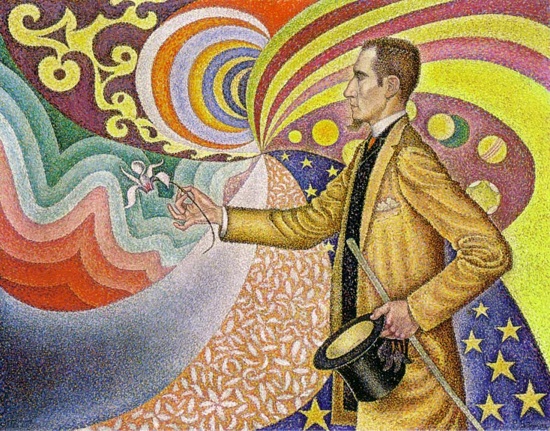
1861: Félix Fénéon (French anarchist, art critic), Lou Salomé, William Bateson (Biologist, founder of genetics), William C. Durant (founder of General Motors), Frederick Hopkins (Scientist, discovered vitamins), Victor Horta (Art Nouveau architect), James Naismith (inventor of Basketball), Frederic Remington (Sculptor), Rudolf Steiner (Philosopher, Anthroposophical Society), Rabindranath Tagore (Poet), Frederick Jackson Turner (Historian, Frontier Thesis), Alfred North Whitehead (metaphysical mathematician), William Wrigley, Jr. (chewing gum magnate)
1862: Carl Charlier (Astronomer, Motion and the Distribution of the Stars), Claude Debussy (French Impressionist composer), Robert Emden (Mathematician, stellar structure), Robert Ford (shot and killed Jesse James), O. Henry (Author), David Hilbert (Mathematician, Hilbert Space), Gustav Klimt (Painter, Founder of the Vienna Sezession), Maurice Maeterlinck (Playwright), Joseph Merrick (The Elephant Man), Arthur Schnitzler (Playwright), Charles M. Schwab (founder of Bethlehem Steel), Billy Sunday (Evangelist), Ida B. Wells-Barnett (civil rights advocate), Edvard Westermarck (Anthropologist), Edith Wharton (Novelist, The Age of Innocence), Maurice Barrès (French novelist, journalist, and anti-Semite nationalist politician and agitator)
1863: Leo Baekeland (inventor of Velox and Bakelite), Annie Jump Cannon (Astronomer, census-taker of the sky), Franz Ferdinand (assassination touched off WWI), Henry Ford (founder of Ford Motors), David Lloyd (UK Prime Minister, 1916-22), William Randolph Hearst (newspaper magnate), Casey Jones (railroad hero), Arthur Machen (Welsh horror novelist, occultist), George Herbert Mead (Pragmatist, social behaviorist), Margaret Murray (Egyptologist, mother of Wicca), Richard F. Outcault (Cartoonist, Yellow Kid), Henry Royce (designed the first Rolls-Royce), George Santayana (Philosopher, The Realms of Being), Richard W. Sears (Sears, Roebuck founder), Jessie Willcox Smith (The Water-Babies illustrator). Honorary Anarcho-Symbolists: Gabriele D’Annunzio (Author, Anarchist Dictator of Fiume, 1919-20), Edvard Munch (Painter, Scream), Luis P. Senarens (SF writer).
MORE NOTES ON THE PLUTONIANS
The Hermetic Order of the Golden Dawn: Samuel Liddell MacGregor Mathers (1854), founder of the Order; Arthur Edward Waite (1857), created the Rider-Waite Tarot deck; Arthur Machen (1863), Welsh horror novelist.
Neo-impressionists: Charles Angrand, Henri Edmond Cross, Georges Seurat, honorary Plutonian Toulouse-Lautrec.
Also, speaking of the Plutonians’ grasp of deep sociocultural patterns: Owen Wister’s The Virginian (1902), the prototypical early fictional Western, transposed the Knights of the Round Table into the American West with cowboys as knights, and tyrannical owners of cattle empires as kings.

HONORARY PLUTONIANS: From the New Promethean Generation: Cecil Rhodes, possibly Vincent Van Gogh. From the Anarcho-Syndicalist Generation: John Jacob Astor, Jim Beam (Bourbon baron), Nellie Bly (Journalist, Ten Days in a Mad-House), Max Weber (Sociologist, The Protestant Ethic), Wilhelm Wien (Physicist, Blackbody radiation), Henri Toulouse-Lautrec (all 1864).
PS: The 19th-century’s three most notable oddities (Ishi, The Elephant Man, and legendary fartiste Le Pétomane) are Plutonians. Team them up with Tesla, and you’ve got the plot of a League of Extraordinary Gentlemen-style comic book…
SF authors:
* L. Frank Baum (The Master Key, Ozma of Oz, Tik-Tok of Oz)
* K.E. Tsiolkovsky (The Call of the Cosmos, Beyond the Planet Earth)
* George Griffith (The Angel of the Revolution, A Criminal Croesus, The Great Weather Syndicate, A Honeymoon in Space, The Outlaws of the Air, The Stolen Submarine, many others)
* Arthur Conan Doyle (The Lost World, The Poison Belt, The Land of Mist, “When the World Screamed”)
* Charlotte Perkins Gilman (Herland, “With Her in Ourland”)
* Edwin Lester Arnold (Lepidus the Centurion, Lieut. Gullivar Jones)
* Gertrude Atherton (Black Oxen)
* James Barnes (The Unpardonable War)
* H. Rider Haggard (Allan Quatermain, Ayesha, Heart of the World, King Solomon’s Mines, She, When the World Shook)
* Frank Harris (Pantopia)
* George Bernard Shaw (The Apple Cart, Back to Methuselah)
* Joseph Conrad (The Inheritors, with Ford Madox Ford)
* E. Nesbit (Fear, “The Third Drug,” “The Five Senses,” “The Pavilion,” To the Adventuresome, Rose Royal)
* Jerome K. Jerome (Diary of a Pilgrimage, “The Dancing Partner,” “The New Utopia”)
* John A. Hobson (as Lucian, Dips into the Near Future)
ADVENTURE WRITERS: H. Rider Haggard (Top 200: King Solomon’s Mines, She, Eric Brighteyes, Marie, When the World Shook); L. Frank Baum (Top 200: Ozma of Oz); Joseph Conrad (Top 200: Heart of Darkness, Nostromo); Arthur Conan Doyle (Top 200: The White Company, The Hound of the Baskervilles, The Lost World, The Valley of Fear); Kenneth Grahame (Top 200: The Wind in the Willows); Charlotte Perkins Gilman (Top 200: Herland); Anthony Hope (Top 200: The Prisoner of Zenda).
READ MORE essays by Joshua Glenn, originally published in: THE BAFFLER | BOSTON GLOBE IDEAS | BRAINIAC | CABINET | FEED | HERMENAUT | HILOBROW | HILOBROW: GENERATIONS | HILOBROW: RADIUM AGE SCIENCE FICTION | HILOBROW: SHOCKING BLOCKING | THE IDLER | IO9 | N+1 | NEW YORK TIMES BOOK REVIEW | SEMIONAUT | SLATE
Joshua Glenn’s books include UNBORED: THE ESSENTIAL FIELD GUIDE TO SERIOUS FUN (with Elizabeth Foy Larsen); and SIGNIFICANT OBJECTS: 100 EXTRAORDINARY STORIES ABOUT ORDINARY THINGS (with Rob Walker).
